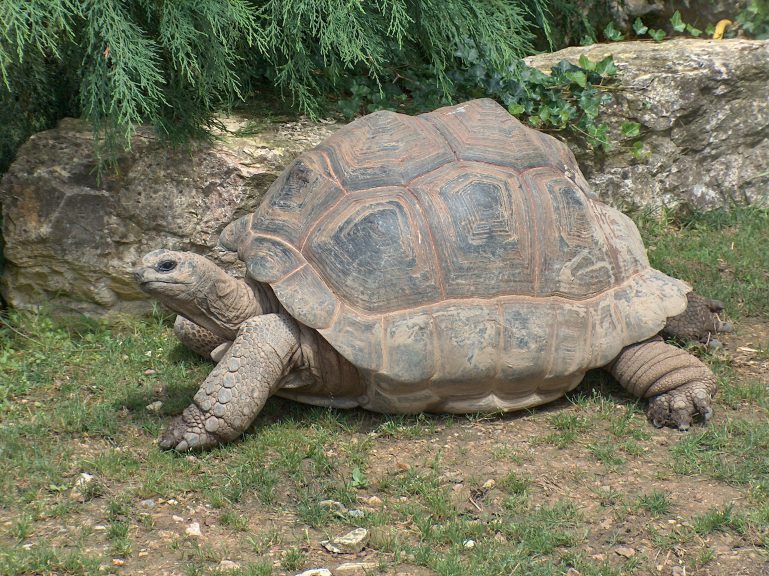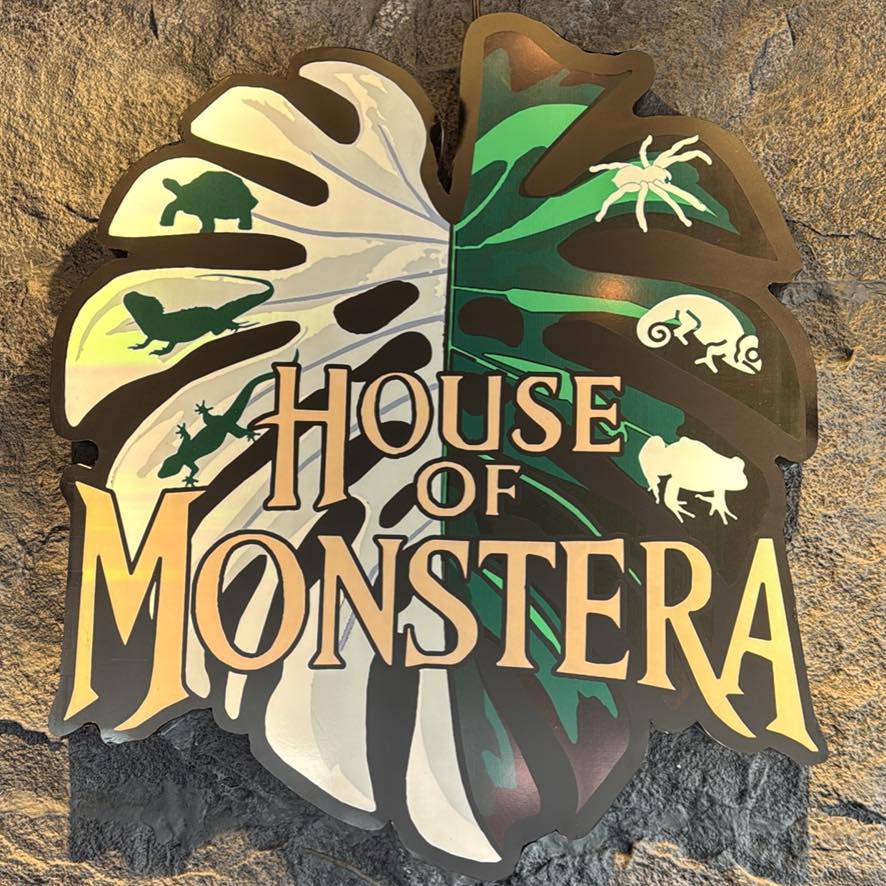
When I published my 46th birthday wish blog, a few concerned friends called me up to see if I was ok. If I wasn’t losing my mind or anything. And I told them I’d already lost it years ago so why worry now?
Kidding aside, had my friends read the entire article, they would’ve realized that it was a fantasy wish list. The kind of birthday wish list you come up with if you had all the money in the world with zero consequences to consider.
So yeah, I hope that explains that.
Now moving on to our regular programming…
Why get an Aldabra tortoise?
Well, I’m not really planning on getting one.
I’m hoping a dozen or so.
Not just one.
And I keep justifying that reason by saying they’re natural grazers, but really… they’re just going to be purchases made out of whimsy.
I could probably make some money from breeding them or making them main attractions that people come and pay money for to see but again, that’s not really something I’m probably going to do. I think if I get baby Aldabra tortoises, I’m just going to add them to my collection until I’m drowning in half-ton tortoises waddling around in the farm.
Still, I would love to have them on the farm.
I’d even settle for just one because these things command a hefty price even as babies.
.
Sam Pascucci of Florida Iguana & Tortoise Breeders’ Advice
I’ve read through Sam Pascucci’s Aldabra care sheet closely and here’s some practical info you and I can use.
Some Basic Facts Before We Proceed
An Aldabra tortoise (scientific name: Aldabrachelys gigantea) is going to outlive you so make sure you put it in your will so that future generations can care for it even if you’re long past gone. These tortoises have 150+ lifespans so be prepared for that.
And these tortoises don’t just live long lives, they also get to be massive! Males can reach 550 lbs with a carapace measuring 48 inches in length. This is not a turtle you can realistically hang out with for the rest of your life.
Chances are, you’ll accidentally get crushed by it when you get older.
Aldabras are also the second largest tortoises in the world, second only to the impossible to get for obvious reasons, Galapagos tortoise.
Diet
Aldabras are grazers.
Their digestive system is built for a steady intake of fibrous, low-calorie greens and grasses. Leave them alone most of the time so that they can take care of business on their own.
What to feed (by life stage):
- Hatchlings / juveniles (4″–12″, ~6 months–2 yrs): Mazuri Tortoise Chow (5M21) as a foundation + lots of leafy greens (spring mix, collards, romaine, kale, dandelion, mustard, turnip greens). Add select veggies (carrots, squash) and occasional cactus.
- Sub-adults (2–4 yrs): Gradually introduce more grasses (Bermuda, orchard), vines and hay.
- Adults (>5 yrs): Mainly hays, grasses, tortoise chow and free grazing when possible.
Rules of thumb:
- Fruit is a treat, not a meal. Keep fruit ≤15% of the diet. Too much fruit/wet food → runny stools, bloating, constipation.
- No animal proteins. Never feed eggs, dairy, meat, seeds, nuts, avocado, crackers or sugary snacks. Avocado seeds can cause impaction.
- Feeding frequency: Young animals can eat daily. Adults typically 5–6 times per week—variety across days is fine.
- Portion guide: They’ll eat about 5% of their body weight per day on average. Use how fast they eat: gone in <30 minutes = not enough; food left after 3 hours = too much.
Water & Hydration
- Provide shallow water bowls; many tortoises soak and defecate in them, so clean often.
- Soaking: Hatchlings (up to ~4–5″) should be soaked daily for 10–30 minutes. After ~4–5″, soaking can be reduced: juveniles every couple days; adults only as needed.
- Outdoor setups benefit from shallow ponds/puddles. Change water twice daily if possible.
Housing & Enclosure Basics
Aldabras are big and need secure, predator-proof, well-constructed enclosures.
Outdoor Pens
- Walls should be sturdy and at least 30 inches high; concrete blocks or pressure-treated wood work.
- Use 12–16 gauge wire mesh for perimeter; consider smaller mesh near the ground to keep out rats, mice and snakes. Bury barriers at least 6″ to stop digging predators.
- Provide shade and sunny areas—about 40% shade at all times helps thermal regulation.
Indoor Pens
- For small or temporary housing, a tortoise table (3’×6′ or 4’×8′) is fine. Keep temperatures 75–100°F with a basking spot ~92–98°F. Use UVB + heat lamps and timers—12–14 hours light/day.
- Avoid substrates that cause slipping or ingestion. Indoor/outdoor carpeting, sand, dirt or sod are common choices for specific setups.
Design Tips
- Add topography: small hills, rocks and obstacles build leg strength.
- Drainage: drill drainage holes in raised pens to avoid flooding.
- Lock tops: prevent dogs, cats, rats or curious humans from reaching in.
- Rotate pens or move animals to different paddocks to avoid overgrazing.
Temperature and Lighting
- Basking: 92–98°F shell temperature in basking spots. Measure with an infrared laser thermometer—don’t guess.
- Minimum safe temps: Don’t expose to <50°F; ideally bring indoors if nighttime dips below ~55°F. For small animals keep nights above 70°F.
- UVB: Essential. Aldabras need UVB to metabolize calcium and avoid metabolic bone disease (MBD). Check UVB levels with a meter if you can.
Health Monitoring & Common Problems
Weight and growth: Weigh regularly. Healthy youngsters gain between 2.5–20 g/day (5 g/day is a solid target). Adults should not lose weight; weight loss signals illness, parasites or respiratory infection.
Stools: Let stools be your guide. The ideal “bushy” stool full of grass/hay is good; watery stools = too much fruit/wet food.
Respiratory signs: Runny nose, coughing, runny eyes or clicking noises → check temperature and humidity; see a reptile vet quickly.
Parasites & constipation: Regular fecal checks and prompt vet intervention when needed. Constipation can present as lethargy and not eating—sometimes related to sudden temperature drops after eating.
Shell care: Watch for fungal spots, lesions or abnormal growth. Regular gentle brushing between scute rings helps; severe infections need veterinary care and topical/antibacterial treatment. Scarlet oil and careful cleaning are commonly used remedies, but consult a vet for serious cases.
I might have to go on ahead with the dream to study veterinary medicine if I go through with the plan to keep Aldabra tortoises…
Predators, pests, and environmental hazards
- Ants can kill hatchlings—treat mounds and never leave hatchlings unattended near active ant hills.
- Dogs and rodents are dangerous to baby tortoises—never trust a dog around hatchlings.
- Check the site for contaminants (engine oils, pesticides) before placing pens—replace soil if necessary.
- Avoid toxic plants (nightshade family, rhubarb leaves, tomato leaves, avocado). If unsure, ask for a toxic plant list from an expert Aldabra tortoise keeper.
Handling & Temperament
- Aldabras are social and often do well in groups. They’re curious and smart—some will come when called for food.
- Minimize handling—too much handling stresses them, especially hatchlings. Don’t parade them around the house. Let them walk and graze. I will have to keep reminding myself that. Maybe post signs everywhere on the farm so that I don’t forget because I know me… I’ll be tempted to pick them up or hug them when they grow big enough as they waddle through the farm.
- When you must handle: be careful with big adults—their bite/grip can be surprisingly strong and clumsy lifting can injure you or them.
Breeding & Population Management
- Maturity: females often lay eggs around 18–20 years; males mature a bit later. Breeding commonly peaks in fall but can occur year-round.
- Manage social groups and pen rotations to prevent overgrazing and to encourage natural behaviors.
I don’t really have any plans to breed them. I just want baby Aldabra tortoises to magically appear from nowhere! Hehehe and I’ll keep them all.
This is Article is More of a Reminder for Me Than it is for You
I have the original carsheet from Sam Pascucci and if you want a copy, you can email me or head on directly to their website to check out more care tips and/or get an animal or two from them.
Here’s their website:
Florida Iguana & Tortoise Breeders
For local breeders and sellers, check out Congo Charlie

and in Davao City: House of Monstera

That’s all for now!

